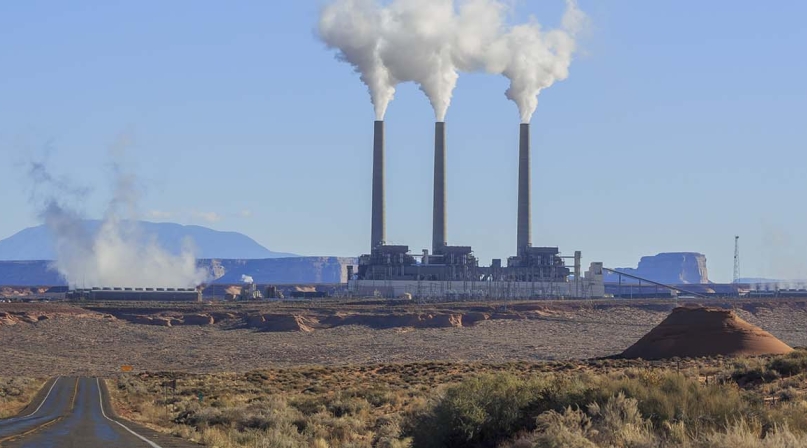Coal’s decline fosters new thinking

When coal plants and mines shut down, counties look to diversity their economies and focus on worker retraining to retain residents and rebuild job markets
Lena Fowler felt like Coconino County, Arizona was well ahead of the game. When she started as a county supervisor in 2009, the Navajo Generating Station in her district was scheduled to close in 2044, giving the coal-fired power plant near the Utah border a nearly-70-year lifespan. She figured that by starting their transition planning early, the county would have a generous amount of time to prepare for the power plant’s closure and sidestep local economic consequences.
“We knew there would be some eventual transition to a new economy, so we’d better start planning for it,” she said. “There were a lot of people working there making good money with advanced degrees. If all of that went away, our demographics would change, and we’d have trouble attracting business to the community.”
Learn More
NACo/NADO/EDA resource portal on economic diversification
That happened much sooner than most in the area anticipated. In 2017, the plant put off an overhaul that would have upgraded its operations. Then the topic changed to whether the plant would close in July. All of that followed the reduced operations on the Coconino Community College campus in Page, close to the power plant.
“July? What happened to 2044?” Fowler remembers saying. “They explained that the economics have changed, gas is more affordable than coal and it wasn’t viable, long term.”
That’s the reality facing a lot of coal-dependent counties, as coal drops to one-third of American energy production in 2017 after providing half in 2000. That’s meant plummeting job numbers in the industry, with a 59 percent decline of the coal mining workforce between 1980 and 2015. It isn’t just competition from natural gas that is forcing job cuts — the process is increasingly mechanized, and even if coal use rebounds, it would not necessarily mean more jobs. But the tipping point that leads to mine and power plant closures is still stark.
Delta County, Colorado saw things change fast, too, when a fire in 2013 prompted one of two mines to shut down, rather than rebuild. The county’s other mine followed a year later, with the two closures wiping out 800 jobs.
“A lot of coal-reliant counties are facing slow attrition, but we just had a shock,” said Elyse Ackerman-Casselberry, the county’s community and economic director. “We had no other choice.”
Those changes have had different effects, and anticipated effects, on their counties. While it’s hard to say how much of a decrease in Delta County’s tax base has come from coal mine closure, Ackerman-Casselberry said it certainly has contributed. Families left town, gutting school enrollment. Federal mine lease payments to the county have declined, and the housing market, which never recovered from the Great Recession, plummeted again and stagnated.
The Navajo Generating Station’s closure won’t sink Coconino County, the second-largest county in the continental United States. But a failure to replace those jobs in northern parts of the county will be crippling to the Navajo reservation, where most plant and mine workers live, and the towns outside of the reservation that supported the industry. It will change the northern region of the county, including a drop in $51 million in economic impact to the city of Page, according to a Northern Arizona University study.
The plant ultimately extended its lease with the Navajo Nation until the end of 2019, giving the county a slight reprieve to figure out how it will keep one of its communities together.
Navajo Generating Station employs roughly 500 people, but it draws it coal from a mine in neighboring Navajo County, and ancillary jobs add up to roughly 2,400. And that goes even further, Fowler said, because many of the workers are Navajo, and in that culture one paycheck often supports an extended family, which usually includes aging parents.
“The big fear is that this will divide families,” Fowler said. “We’re also worried about how this will affect special districts — our school districts, fire districts, hospital districts — if we lose population.”
Anatomy of a comeback
Now formerly-coal-driven counties are left to figure out how to replace those economic drivers. While the Coconino County community is trying a last-ditch effort to find a buyer for the plant, both counties are essentially planning to move on and diversify their economies.
Delta County has a plan, and while the shock of the mine fire hit the community hard, the county’s economic and community development department was already thinking ahead.
“The writing had been on the wall for coal,” Ackerman-Casselberry said. “We had been thinking about that decline, and we were well positioned to act more quickly.”
They aggressively courted broadband infrastructure opportunities and collaboration between the state, the local council of governments have made way for access to the county’s towns. Three communities already have broadband, and within six months all will be hooked up.
“Then we’ll work to get it out to the rural parts. We’re ahead of the curve in Colorado for rural counties.”
That’s how the county hopes to regain what it lost.
“We’re shifting the mindset that job creating has to happen in the hundreds,” Ackerman-Casselberry said. “The idea of landing a big something… while we’d work hard to get it, we are targeting primarily entrepreneurs who will hire 2-5 people. Broadband supports the entrepreneurial ecosystem more than anything.”
So they’ll focus on getting on base, with a walk or a single, rather than trying to hit a home run.
“That sort of grassroots job growth is where we’re going to see things happen,” Ackerman-Casselberry said. “We aren’t going to be a manufacturing center.”
And along the way, there’s work for the displaced miners in the buildout of internet lines.
“That’s been the bridge between immediate unemployment and the future,” she said.
When people move into Delta County, bringing a remote job with them, they stabilize the housing market.
Fowler said education is going to be the cornerstone of northern Coconino County’s resilience. Four institutions — Coconino Community College, Northern Arizona University, Navajo Technical University and Dine College — will fill the gap created when the community college pulled back on operations on its Page campus three years ago. Of the other participating schools, Northern Arizona University was the only one within 130 miles. The Page Higher Education Consortium will offer classes starting in early 2018.
She said there would be an emphasis on the hospitality industry and outdoor recreation — nearby Lake Powell is a popular attraction, and Glenn Canyon and Grand Canyon national parks need rangers.
“It will offer a chance to retrain the workforce for many different kinds of jobs,” Fowler said. “Having an opportunity for higher education and job training in the Page area will give people a chance to remake their careers and keep them in Page.”
Attachments
Related News

Counties and Railroads: Shared Priorities for the Next Surface Transportation Bill
County leaders from across the country have a vital opportunity to ensure their infrastructure priorities are front and center.

House reintroduces bipartisan legislation to level playing field for rural communities
House reintroduced the Rural Partnership and Prosperity Act, bipartisan legislation intended to advance economic development in rural counties and overcome barriers to obtaining federal funding and resources.

Podcast: Eastern Tennessee counties invest in tourism during shutdown
Sevier County, Tenn. refused to let the government shutdown devastate its fall tourism draw—Great Smoky Mountains National Park. County Mayor Larry Waters describes the lengths he and his neighbors went to keep the park open. And NACo Chief Government Affairs Officer Mark Ritacco offers an outlook on what counties can take away from the shutdown and into the future.
